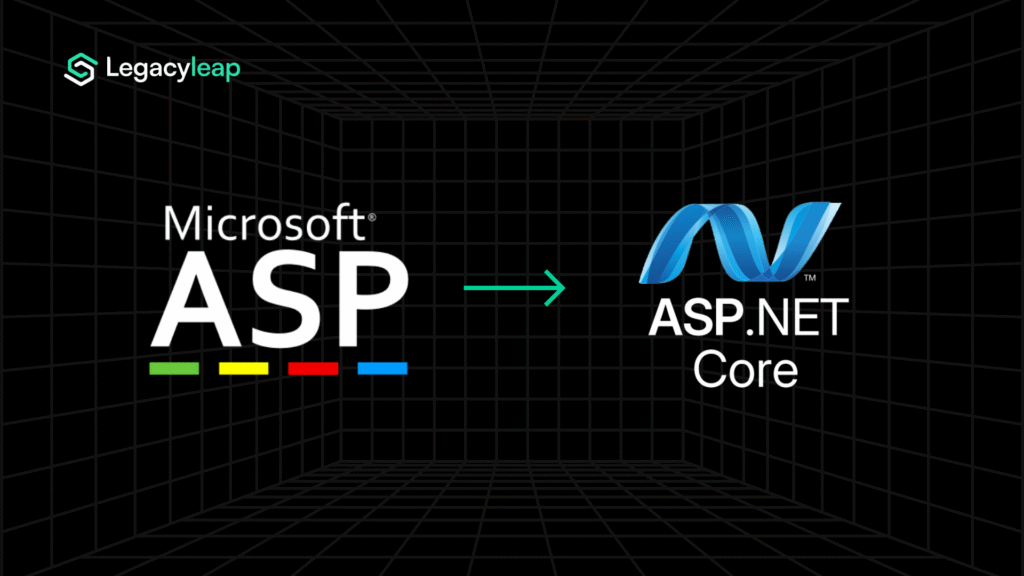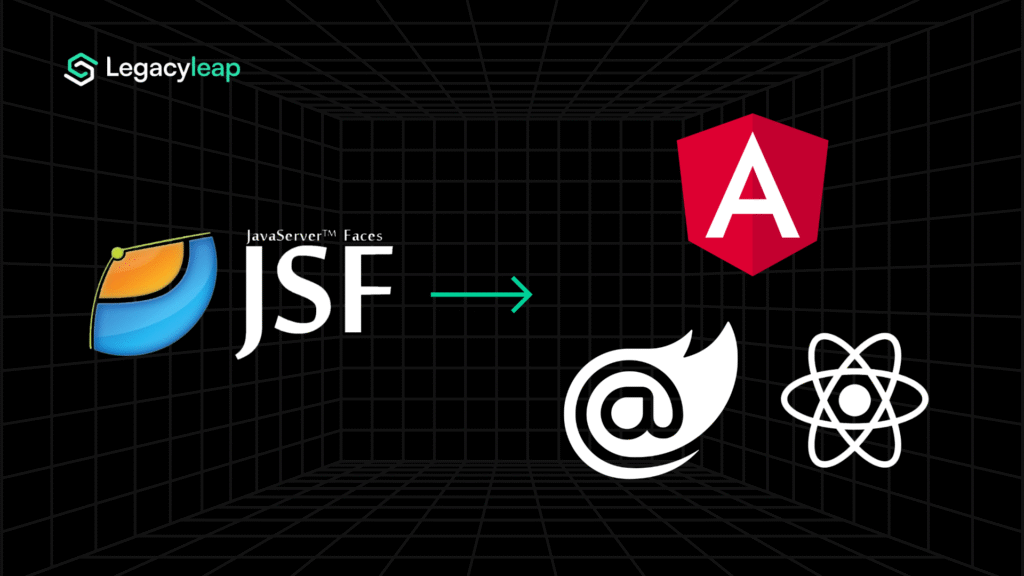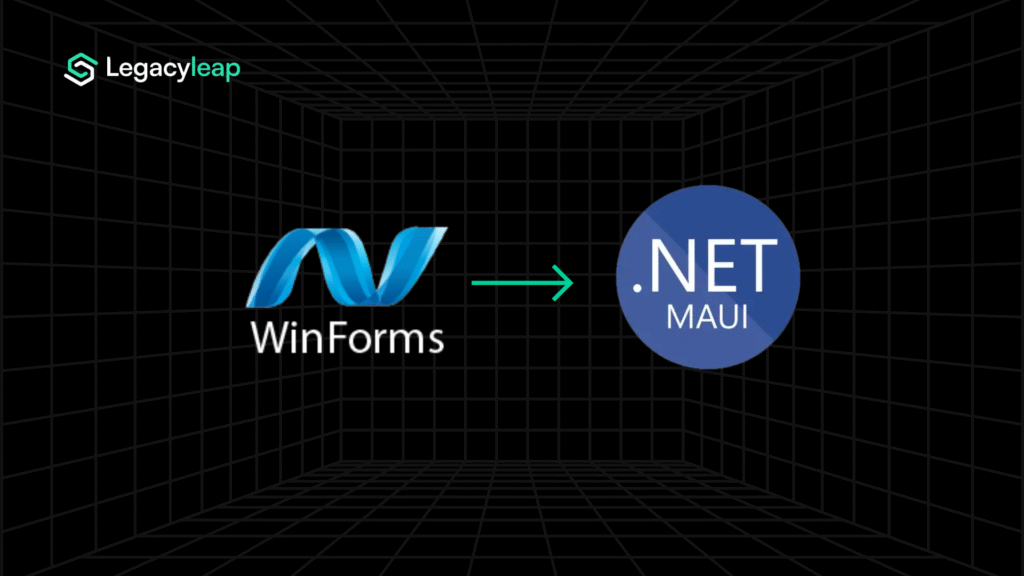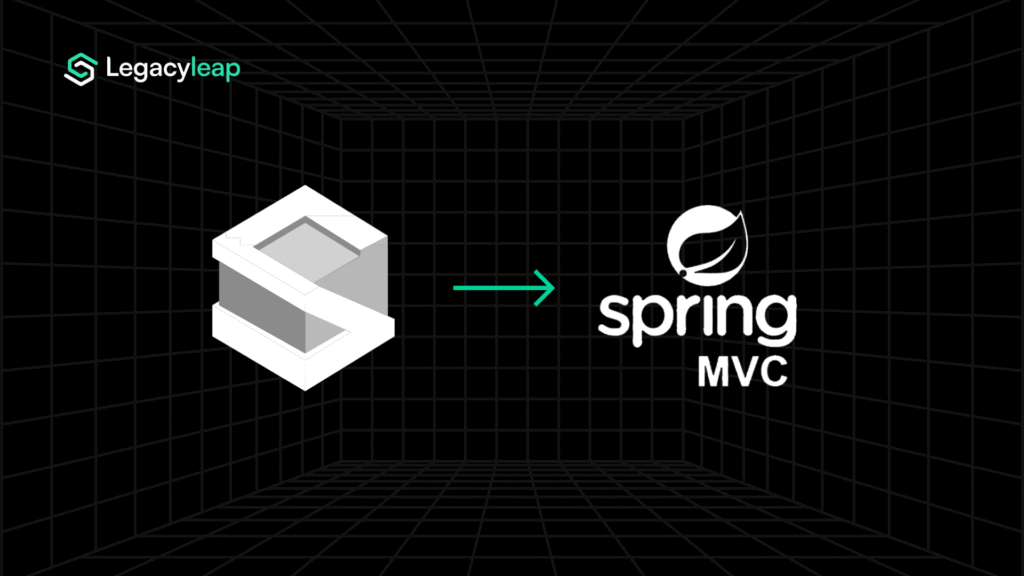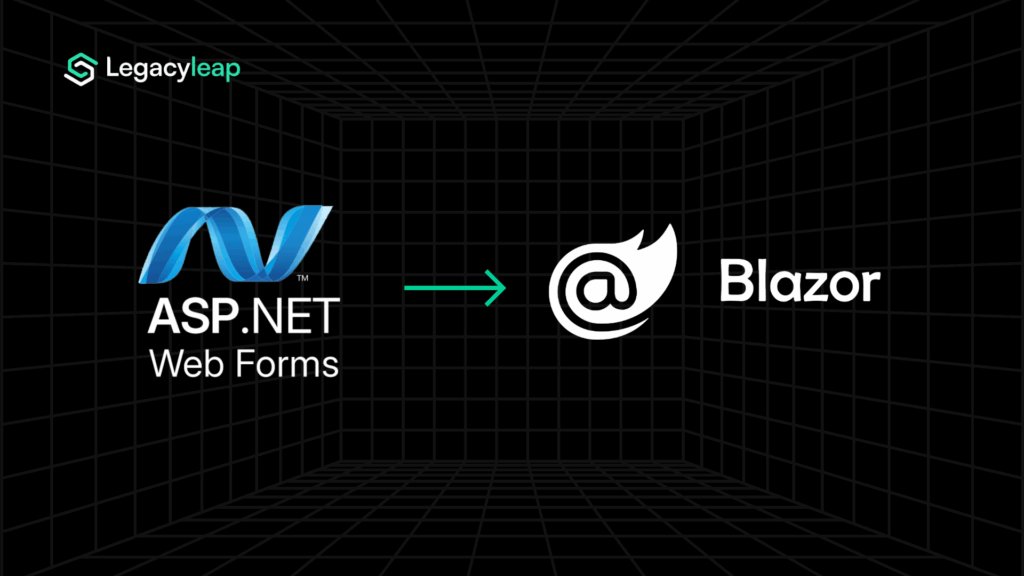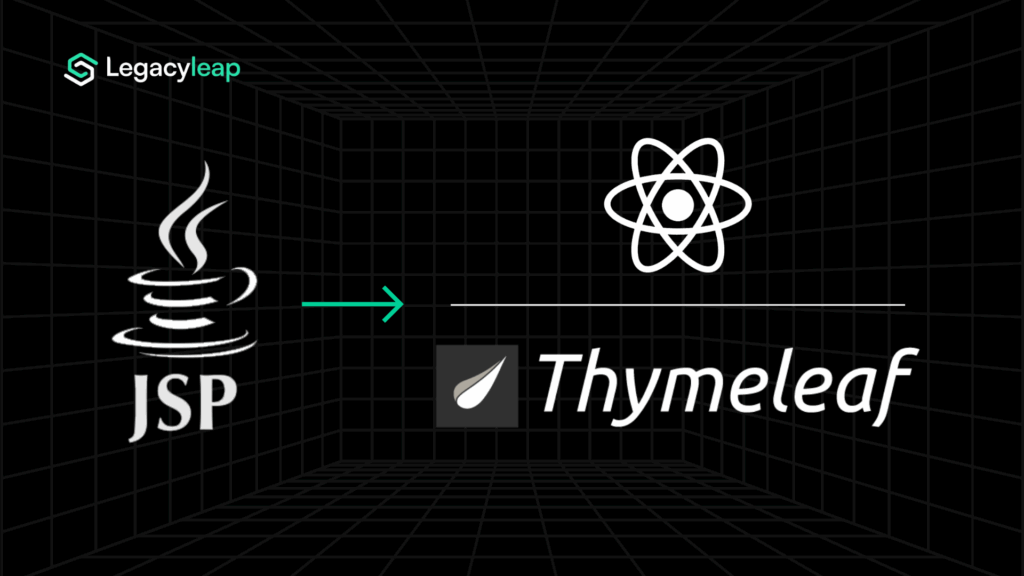Introduction: Why Enterprises Must Move Beyond Swing
For decades, Swing was the standard for Java desktop applications. Many enterprises, from banking floors to retail POS terminals, still rely on Swing-based apps. But today, it has become a liability:
- Obsolete technology: Swing is in maintenance mode, with no roadmap for future innovation.
- Poor user experience: UIs feel outdated compared to modern desktop or web apps.
- Scalability limits: Swing apps are monolithic and hard to extend.
- Cloud incompatibility: Native desktop apps don’t align with modern web- and container-first ecosystems.
Enterprises that remain on Swing face rising operational costs, skill scarcity, and mounting compliance risk.
Modern frameworks like JavaFX and web technologies such as React, Angular, and Vue deliver what Swing cannot: modularity, cloud alignment, and continuous delivery readiness.
The challenge now is modernization without disruption. Enterprises need to migrate without rewriting the business logic that keeps operations running. That’s where Legacyleap’s Gen AI modernization framework comes in, which we’ll address further below.
What JavaFX and Web UIs Bring to the Table
Migrating from Swing is a chance to move beyond legacy UI constraints, not just in design, but in maintainability, scalability, and delivery. Both JavaFX and modern web frameworks offer viable paths forward depending on enterprise goals.
| Capability | Swing (Legacy) | JavaFX (Desktop Modernization) | Web Frameworks (React / Angular / Vue) | Enterprise Impact |
| Roadmap | Legacy, frozen in time | Actively maintained (OpenJFX community) | Massive ecosystem with rapid innovation | Future-proof technology alignment |
| UI Experience | Static, limited styling | Modern, fluid desktop UIs with CSS and FXML | Rich, responsive, mobile-first SPAs | Superior user experience and engagement |
| Deployment | Local installation, manual updates | Cross-platform packaging, native installers | Browser-based, CI/CD ready, container-friendly | Reduced maintenance and delivery costs |
| Integration | Minimal cloud or API support | Fully compatible with Java backends and microservices | API-first architecture, fits hybrid-cloud models | Easier backend reuse and faster rollout |
| Scalability | Monolithic, hard to modularize | Modular with reusable FXML components | Fully component-driven architecture | Faster development and simplified scaling |
JavaFX suits enterprises taking an incremental modernization route, retaining Java expertise while modernizing UI and deployment models. Web frameworks, on the other hand, are ideal for long-term transformation, unlocking CI/CD pipelines, containerized deployments, and mobile responsiveness at scale.
Whichever path you choose, modernization must preserve backend integrity and UI behavior. Legacyleap’s Gen AI platform ensures this by automatically mapping UI hierarchies, extracting event-driven logic, and generating validated equivalents in JavaFX or web components, all before a single manual rewrite begins.
Also read: A Complete Java Migration Guide for Modernizing Legacy Enterprise Stacks.
Swing Migration Challenges and Strategies
Most Swing systems have evolved over the years, mixing event handlers, business logic, and UI rendering in the same codebase. Untangling these dependencies safely is what determines whether modernization succeeds or stalls.
The five most common challenges include:
- UI mapping complexity: Swing’s nested layouts and component hierarchies must be systematically mapped to JavaFX FXML or modular web components. Without automation, this process becomes error-prone and slow.
- Event handling redesign: Swing’s listener-based event model doesn’t translate directly to modern event-driven or reactive frameworks. Each listener chain needs to be re-architected for async, stateful behavior.
- Business logic coupling: Many Swing apps hide core logic inside UI classes. These must be refactored into service layers or APIs before migration—otherwise, the new UI can’t reuse existing business workflows.
- Deployment and distribution shift: Moving from packaged desktop installers to browser-first or containerized delivery requires major changes in build pipelines, runtime dependencies, and release models.
- Testing voids: Most Swing apps lack regression or UI tests, making it difficult to verify behavior after modernization. Automated parity validation becomes essential.
Proven modernization strategies include:
- Incremental UI replacement: Migrate modules or screens in phases using the Strangler Fig pattern to reduce disruption.
- Hybrid deployment: Temporarily run Swing and JavaFX/web modules side by side to validate parity before full cutover.
- Refactoring-first approach: Preserve backend logic, focusing modernization solely on the presentation layer to minimize risk.
Enterprises that attempt these migrations manually face months of trial-and-error. Gen AI provides the structure, automation, and precision required to execute them predictably.
How Gen AI Transforms Swing to JavaFX or Web Modernization
Traditional Swing modernization involves tedious reverse-engineering – manually tracing UI flows, identifying event dependencies, and rebuilding layouts. Gen AI replaces guesswork with governed automation, compressing months of effort into weeks.
Here’s how it redefines the process:
- Automated UI mapping: Gen AI scans Swing layouts and component hierarchies to auto-generate JavaFX FXML or React component structures, preserving both layout integrity and binding logic.
- Dependency tracing: AI models identify where business logic, event listeners, and stateful UI behavior intersect, flagging what must be decoupled before refactoring begins.
- Refactoring guardrails: Compiler-level constraints ensure that logic separated from presentation layers remains functionally equivalent. This maintains stability even during incremental migration.
- Functional parity validation: AI-generated regression suites test modernized UIs against Swing behavior, ensuring identical workflows before deployment.
The result is measurable efficiency: 60–70% less manual effort, full traceability of UI dependencies, and modernization that’s faster, safer, and fully verifiable.
With Gen AI driving comprehension, translation, and validation, enterprises can modernize even mission-critical Swing systems with confidence and control.
Also read: How Can Gen AI Drive Every Step of Your Modernization Journey?
Legacyleap in Action: Verified Desktop Modernization
Modernizing legacy Swing applications requires precision, governance, and validation across thousands of UI interactions. Legacyleap is purpose-built for this level of complexity, combining Gen AI automation with compiler-grade safeguards to modernize desktop systems safely and predictably.
Here’s how Legacyleap delivers end-to-end assurance:
- System comprehension: Before refactoring begins, Legacyleap performs graph-based modeling to capture UI hierarchies, event flows, and backend integrations. This provides a complete blueprint of how every screen, listener, and business function interacts.
- Inside-enterprise execution: All processing and code transformation happen entirely within the client environment, ensuring data, source code, and proprietary logic never leave the enterprise perimeter.
- Human-in-the-loop oversight: Engineers review every AI-driven transformation at explicit checkpoints, ensuring compiler outputs align with design intent and domain rules. Automation accelerates; governance keeps it safe.
- End-to-end modernization assets: Beyond transformation, the platform generates auto-documented code, regression test suites, and deployment manifests, extending modernization from code to production readiness.
Measured outcomes:
- 100% UI and dependency mapping before refactoring starts
- 60–70% automation in Swing → JavaFX or Web modernization
- 90%+ functional parity validated through automated regression tests
- Significantly shorter delivery timelines, even for mission-critical desktop workloads
With Legacyleap, modernization is an engineered process executed within enterprise boundaries, audited at every step, and optimized for scalability and compliance.
Also read: Why Legacyleap Is Your AI Companion Platform for Enterprise-Scale Modernization.
Conclusion: A Verified Path to Modern UIs
Swing-based desktop applications once defined stability; now, they represent risk.
Limited maintainability, static UIs, and a lack of cloud alignment make them increasingly expensive to sustain.
Modern frameworks like JavaFX and React/Angular offer scalable, modular, and future-ready alternatives that deliver web-speed agility and cloud-native deployment models.
The real challenge lies in execution. Legacyleap’s Gen AI-powered platform bridges the gap by automating UI comprehension, refactoring with compiler guardrails, and validating every behavior through regression tests. The result: faster modernization, reduced rework, and zero disruption to business workflows.
Start with a $0 Assessment to discover your Swing dependencies, understand modernization pathways, and receive a verified roadmap tailored to your enterprise’s environment.
FAQs
The cost depends on the size and complexity of the application, but Gen AI reduces manual effort by 60-70%, directly lowering engineering hours. Enterprises typically see ROI within the first year through reduced maintenance, faster deployment cycles, and improved user experience.
If your backend logic is still sound, refactoring, where only the UI layer is modernized, is faster and less risky. Rewriting makes sense for high-debt systems where the architecture needs a full overhaul. The blog recommends a refactor-first approach, backed by AI guardrails and regression tests.
Modern UIs built with JavaFX or web frameworks reduce maintenance burdens through modular architecture, broader developer support, and CI/CD compatibility. Over time, this translates to fewer bugs, faster updates, and reduced reliance on scarce Swing expertise.
Legacyleap enables hybrid deployments, where Swing and modern components run side-by-side. This incremental rollout approach ensures business continuity while new modules are validated in parallel with existing ones.
Modern frameworks support better access control, encryption, and API-level governance, unlike Swing, which often lacks built-in security layers. Legacyleap’s Gen AI platform also ensures secure, on-premise execution and provides traceable test coverage to support audits and compliance.



